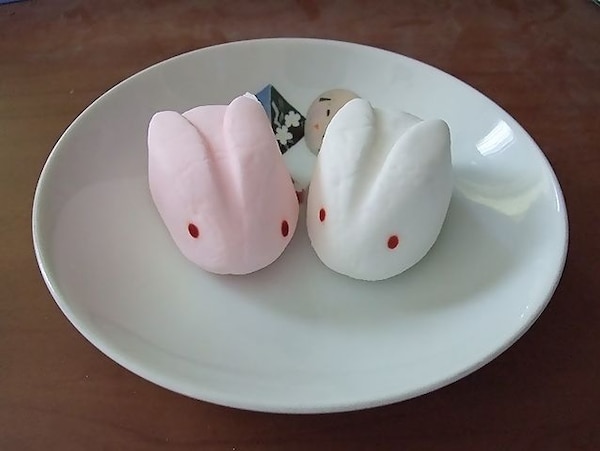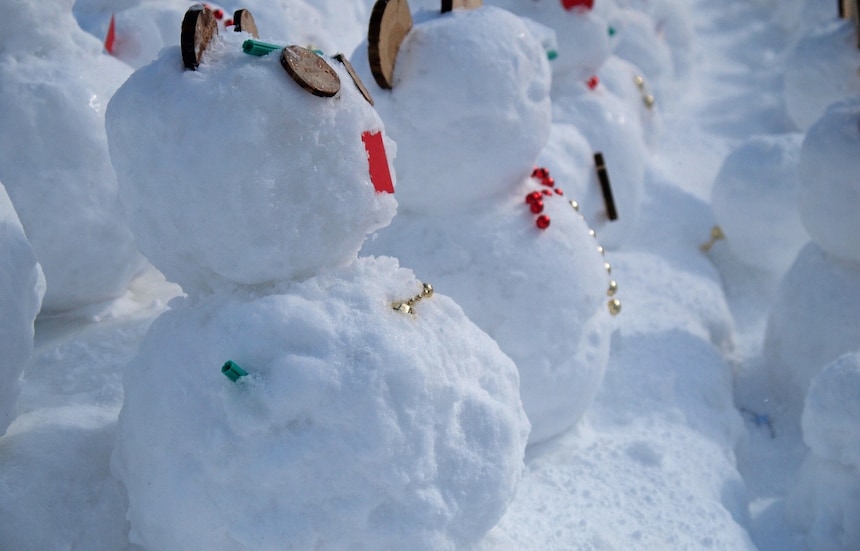3 Very Japanese Snow Creatures
When snow piles up in Japan, you might occasionally spot short snowmen with no legs or arms. People might tell you to stay away from women with long black hair, or you might receive a cute white rabbit as omiyage (souvenir). If all this sounds strange or intriguing to you, this article is a must read!
Yuki Daruma: Japanese Snowman
https://commons.wikimedia.org/wiki/File:Snowman_and_Snowball_fight_in_Mount_Kurai.JPG
Making snowmen is a snow day tradition for children all over the world, but have you ever noticed how different the Japanese snowmen are from Western ones? For starters, the Japanese snowman never has arms. In addition, it’s usually formed by two snowballs, no more and no less. This shape has stayed consistent since the Edo Period (1603-1868), as we can confirm by looking at paintings from that era. There are some theories about how the differentiation happened. Some speculate that this specific shape can be traced back to the name itself.

https://www.flickr.com/photos/tanaka_juuyoh/4120920564
In the words yuki daruma (雪だるま), the character 雪 yuki means "snow." But, daruma is used to indicate the round, traditional Japanese dolls modeled after Bodhidharma, the monk who brought Zen Buddhism to China from India and is considered the founder of it. The Japanese snowman looks similar to one of those round dolls, and in the Edo Period, ritual offerings would be placed near it. On the other hand, since the Western snowman is, well, a man, it's natural to make it stand tall, with outstretched arms.
Yuki Onna: Scary Snow Woman

https://ja.wikipedia.org/wiki/%E9%9B%AA%E5%A5%B3
Yuki Onna (雪女, literally "snow woman") is a well-known spirit (yokai) of Japanese folklore. There are many different legends connected to Yuki Onna and, while they greatly vary by region in terms of content, in most of them she displays the opposite characteristics of snow: beauty on one side, and danger on the other. For example, while in many stories she freezes people to death, she is also often portrayed as having a soft spot for children or beautiful youngsters. While the stories differ, her appearance is constant throughout Japan. The Yuki Onna shows herself on snowy nights as a tall, beautiful woman with long black hair, pale complexion and blue lips. She either wears a white kimono or appears completely nude, and she floats across the snow leaving no footprints behind her. She often has some sort of power over the snow or can transform into snow or mist herself. The Yuki Onna is so popular that she makes countless appearances in artwork, games and manga.
Yuki Usagi: Snow Bunnies

https://commons.wikimedia.org/wiki/File:Fukuoka_wagashi_Yukiusagi.jpg
If you’ve ever bought souvenirs for someone, you might have seen certain cute, white, round-shaped cakes with rabbit ears. Those cakes are often called "snow rabbits" and you might ask yourself: why rabbits?
Well, for one, white rabbits are actually quite common in the northern areas of Japan where it often snows. Maybe because they’re so ubiquitous, children started making snow bunnies instead of snow angels in the Edo Period (as you can see from this print), and the cute round figures became iconic.
Additionally, white rabbits are part of Japanese imagery in many forms. For example, did you know that when looking at the moon craters, Japanese people see a white rabbit making mochi?




